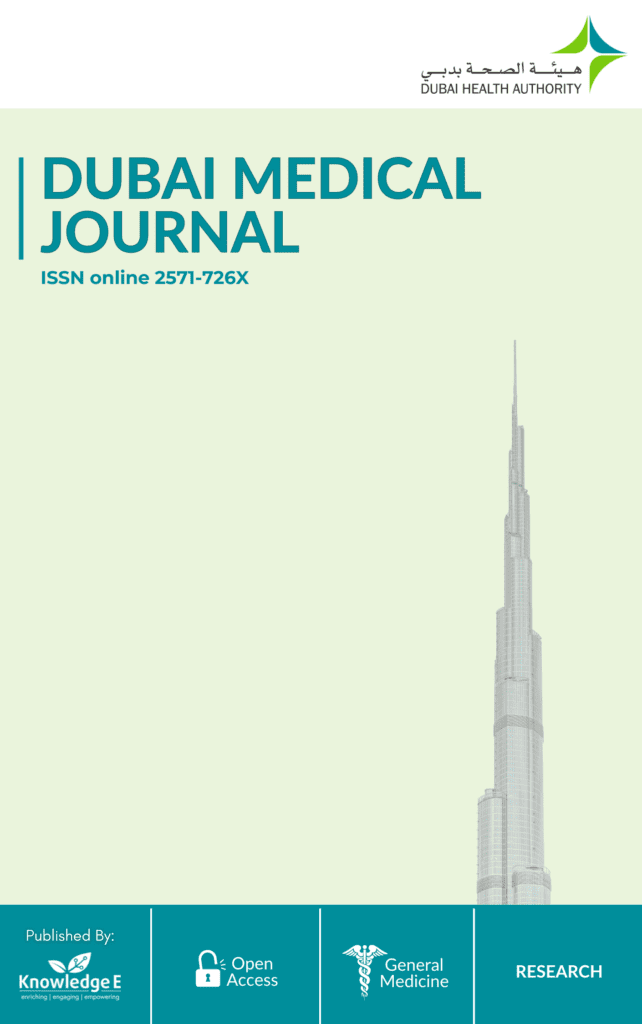
Dubai Medical Journal
ISSN: 2571-726X
Pioneering research in medicine, health sciences, nursing, pharmaceuticals, and laboratory work
Empowering Patient Self-care in Plantar Hyperkeratotic/Palmoplantar Keratodermas Eczema: A Case Report
Published date:Mar 24 2025
Journal Title: Dubai Medical Journal
Issue title: Dubai Medical Journal (DMJ): Volume 8, Issue 1
Pages:42 - 47
Authors:
Abstract:
Introduction: Palmoplantar keratodermas (PPKs) include a range of inherited or acquired skin disorders characterized by thickening of the skin on the soles. Hyperkeratotic dermatitis on the hands and feet is a chronic, challenging-to-treat condition that often results in pain, reduced mobility, and impaired functionality.
Case Report: This study describes a 42-year-old man with idiopathic PPK and no prior dermatological history. He initially presented with recurrent eczema on his left foot, which gradually spread to both feet, particularly affecting the lateral borders. Despite the negative results for fungal and patch tests, as well as a biopsy, his hyperkeratosis and peeling skin have persisted for 5 years.
Conclusion: Because plantar hyperkeratotic eczema is a chronic condition, effective management requires a combination of patient selfcare and medical treatment. Standard therapies, including antifungal, antibiotic, and steroid creams, keratolytic agents, acitretin tablets, and regular wound care, were insufficient in this case, with the patient experiencing recurrent symptoms that impacted his quality of life. A collaborative self-care approach is essential, focusing on minimizing adverse effects such as scarring, skin peeling, and hemorrhaging while considering personal and environmental factors contributing to the condition.
Keywords: eczema, hyperkeratosis, injury care, patient selfcare
References:
[1] O’Toole EA. Mendelian Disorders of Cornification (MEDOC). The Keratodermas, Harper’s Textbook of Pediatric Dermatology; 2019. pp. 1524–1548.
[2] Tsaqilah L, Mudia KA, Usman HA, Dharmadji HP, Hidayah RM, Avriyanti E. A rare case on capecitabine induced acquired Palmoplantar Keratoderma. Clin Cosmet Investig Dermatol. 2023 Dec;16:3713–3718.
[3] Guerra L, Castori M, Didona B, Castiglia D, Zambruno G. Hereditary palmoplantar keratodermas. Part I. Non-syndromic palmoplantar keratodermas: Classification, clinical and genetic features. J Eur Acad Dermatol Venereol. 2018 May;32(5):704–719.
[4] Sunil Kumar S, Elumalai K, Subramaniyan NK, Sivannan S, Srinivasan S. Bullous pemphigoid is a rare autoimmune skin disease that affects the scalp: A case report. Medicine Advances. 2024 Mar;2(1):95– 99.
[5] Mohanasundari C, Anbalagan S, Srinivasan K, Chinnathambi A, Salmen SH, Meganathan V, et al. Evaluation of antibacterial efficacy of various solvent extracts of Evolvulus alsinoides and Mucuna pruriens against multidrug resistant (MDR) pathogenic bacteria. Appl Nanosci. 2021 Sep;:1–1.
[6] Reddy AH, Vidhya K. Skin lesion classification in dermoscopic images with high accuracy using K-Nearest neighbor algorithm comparing with random forest method. In: 2022 4th International Conference on Advances in Computing, Communication Control and Networking (ICAC3N), IEEE, 2022, pp. 652-656.
[7] Dailah HG, Hommdi AA, Koriri MD, Algathlan EM, Mohan S. Potential role of immunotherapy and targeted therapy in the treatment of cancer: A contemporary nursing practice. Heliyon. 2024 Jan;10(2):e24559.
[8] Pinto MB, Pires PC, Calhelha RC, Silva AR, Sousa MJ, Vilas-Boas M, et al. Bee Venom-loaded niosomes as innovative platforms for cancer treatment: Development and therapeutical efficacy and safety evaluation. Pharmaceuticals (Basel). 2024 Apr;17(5):572.
[9] Devi KS, R A, Kizhakkoottu S. Clinico-demographic parameters of oral fungal infections: An institutional retrospective study. Cureus. 2024 Mar;16(3):e55386.
[10] Nagpal R, Mainali R, Ahmadi S, Wang S, Singh R, Kavanagh K, et al. Gut microbiome and aging: physiological and mechanistic insights. Nutr Healthy Aging. 2018 Jun;4(4):267–285.